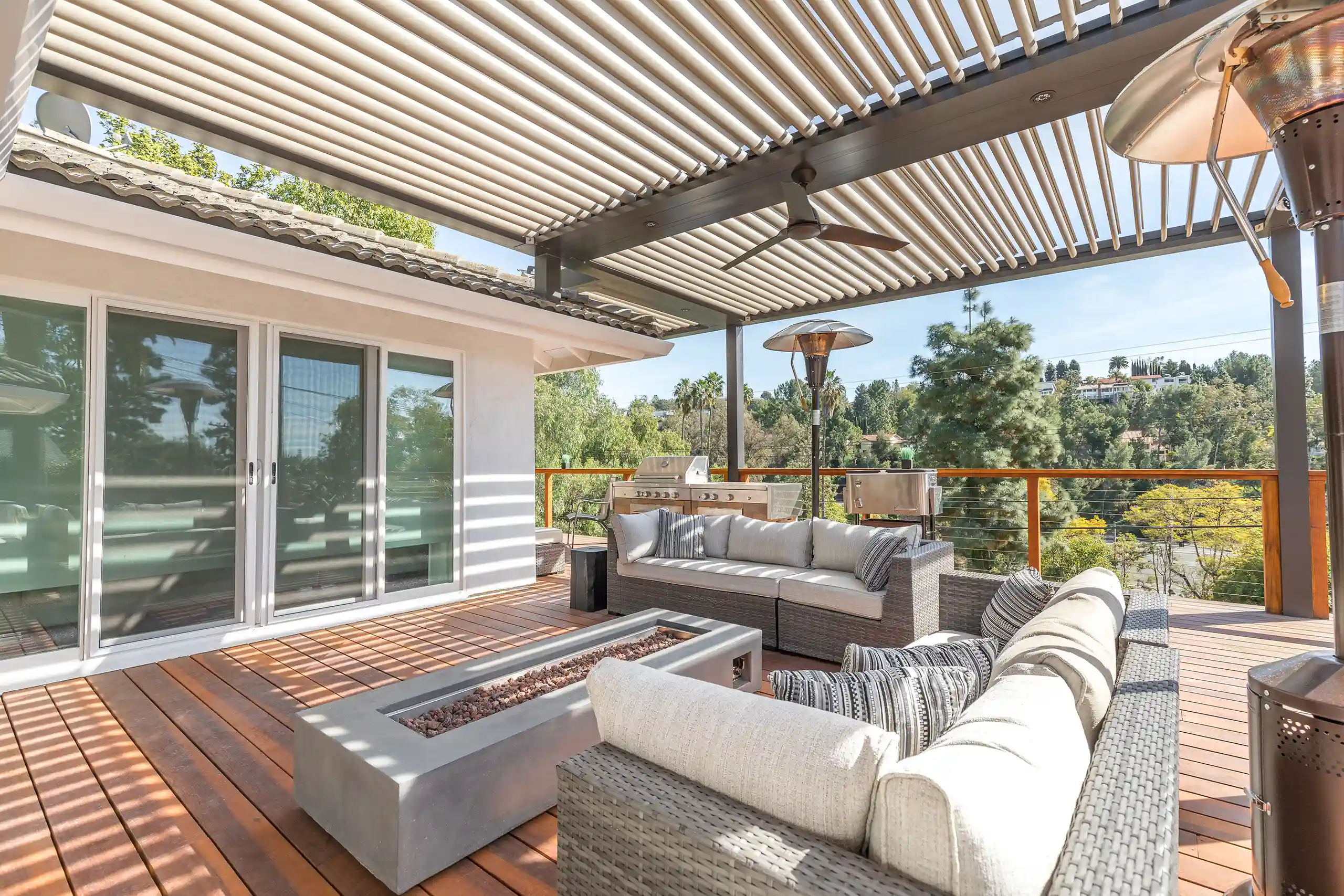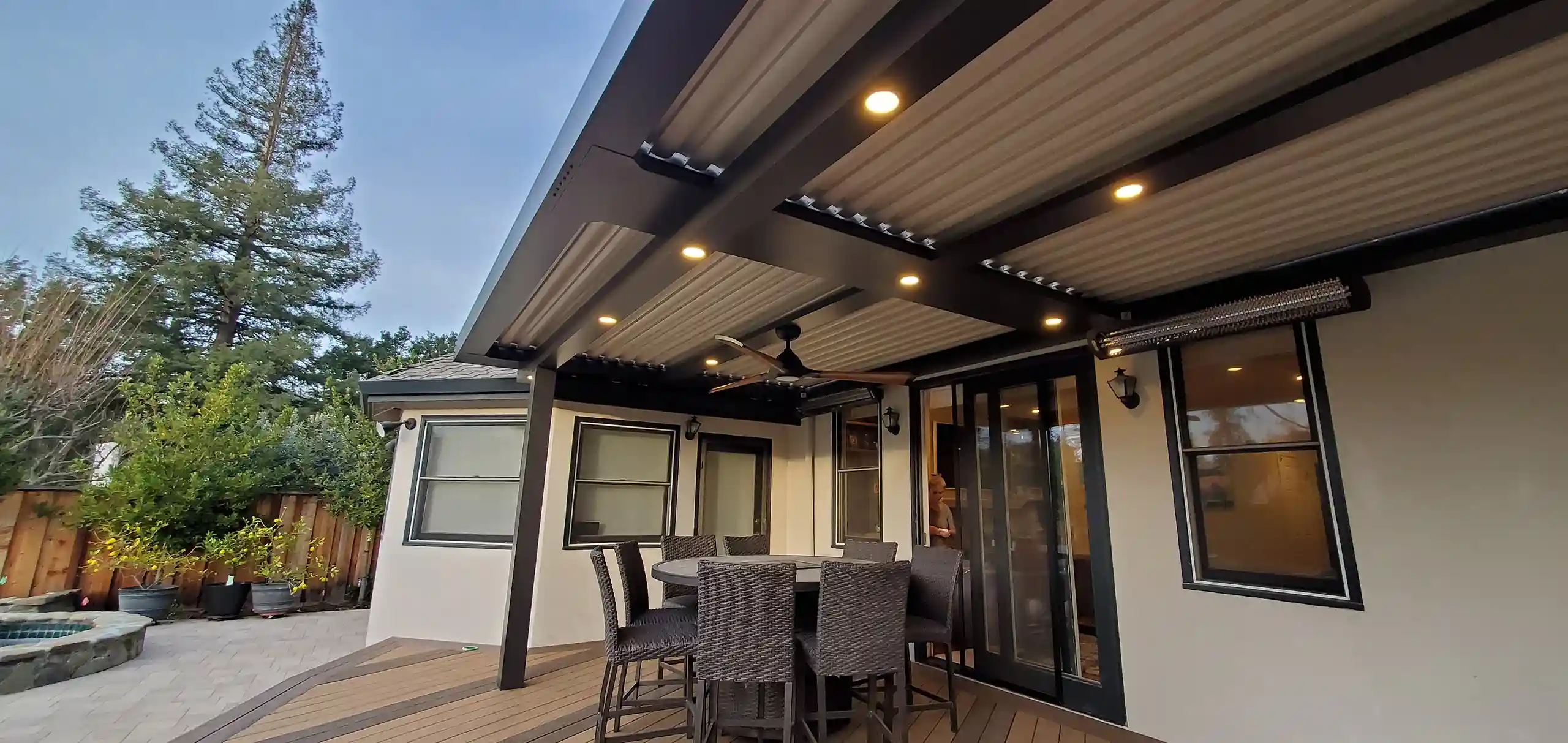Pergolas enhance outdoor spaces by adding style and functionality, creating a versatile area for relaxation and entertainment. Understanding the key aspects of planning, constructing, and maintaining a pergola is essential for homeowners to achieve a beautiful and durable structure. When building a pergola, you can choose between build an attached or freestanding pergola. Let these expert tips from StruXure NorCal aid your pergola plans:
Why Build a Pergola?
Adding a pergola to your outdoor space offers numerous benefits, from enhancing your living area to increasing property value. Pergola installations provide functional advantages and aesthetic appeal, creating a beautiful and versatile extension of your home.
1: Enhance Outdoor Living: A pergola creates additional living space customized for dining, lounging, or entertaining. It provides a defined area in your backyard, making it more usable and inviting.
2: Increase Property Value: Pergolas add value to your home by enhancing its outdoor appeal and functionality. A well-designed pergola can attract potential buyers and boost your property’s market value.
3: Provide Shade and Comfort: Pergolas offer shade, making outdoor spaces more comfortable during hot weather. Options like retractable canopies or climbing plants can enhance the shade and provide a cooler environment.
Planning Your Pergola
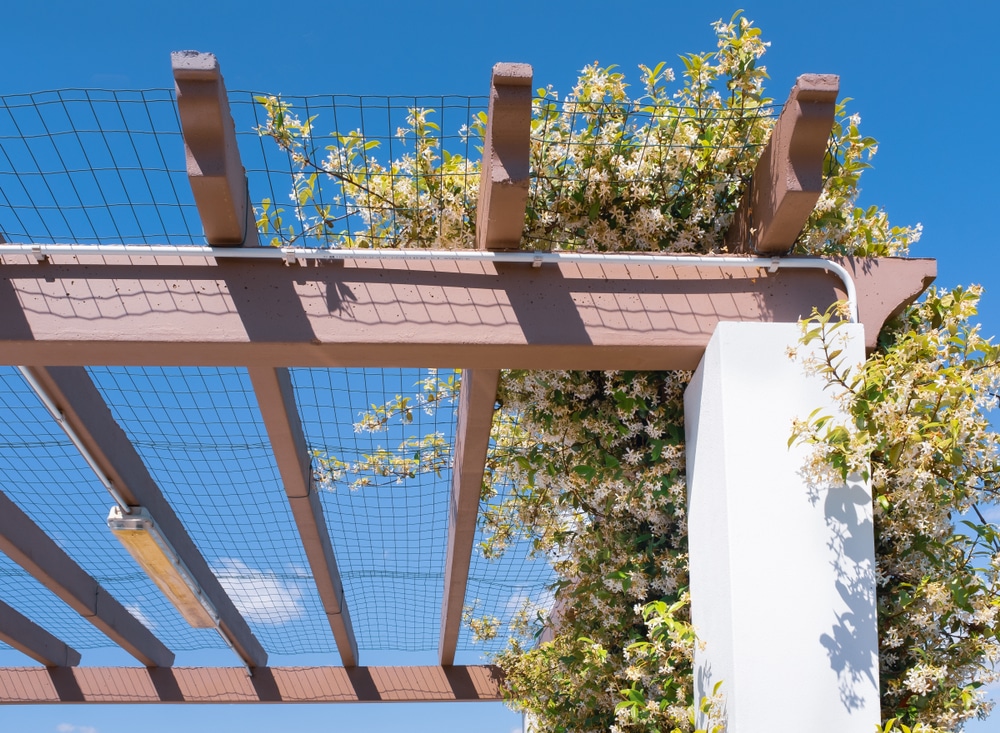
Planning your pergola project is important to ensure a beautiful, functional addition to your outdoor space. By considering factors like pergola style, location, and materials, you can create a custom pergola that complements your home and meets your needs, resulting in a stunning finished pergola.
4: Design Considerations: Choose a pergola design that complements your home’s architectural style. Consider features like beam shapes, column styles, and decorative elements to create a cohesive look with your outdoor space.
5: Location and Size: Select an optimal location for your pergola, ensuring it provides the desired shade and integrates well with your yard. Measure your available space to determine the appropriate size, avoiding an overly dominant structure.
6: Materials Selection: Wood is classic and customizable but requires regular maintenance to prevent weathering and decay. Metal and aluminum are durable, low-maintenance, and resistant to weathering and pests. Vinyl is also low-maintenance and resistant to weathering and pests.
Construction Steps
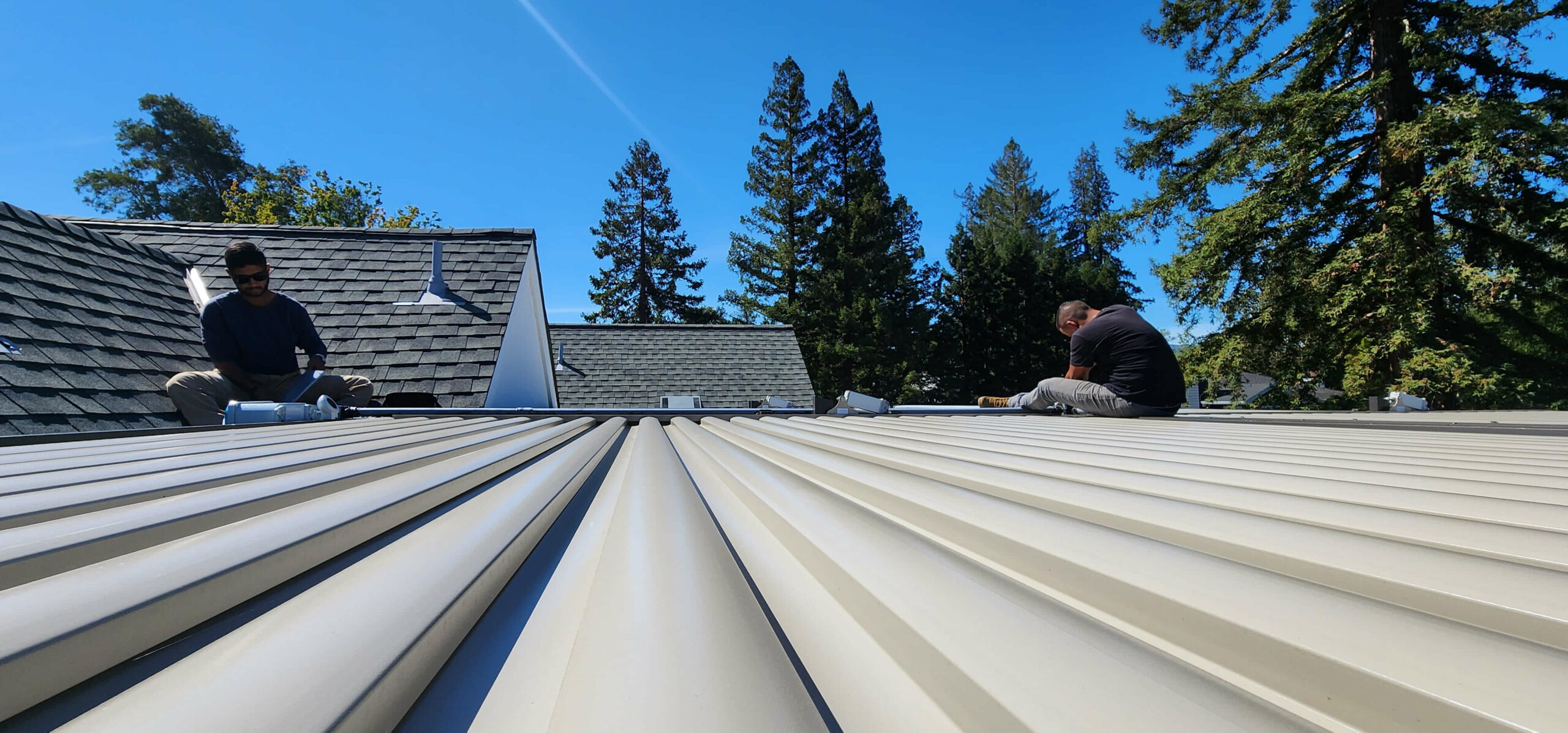
Constructing a pergola requires careful planning and the right materials to ensure stability and durability. Using a pergola kit, basic tools, and structural screws, you can follow these steps to build a sturdy and attractive pergola.
7: Digging Holes and Adding Gravel: Start by digging holes for the pergola posts, ensuring they are at least 24 inches, preferably 30 inches deep. Add a few inches of gravel at the bottom of each hole to improve drainage and prevent the posts from shifting. You might also consider pouring a concrete slab.
8: Installing Posts: Place the posts into the holes and fill them with concrete, ensuring the wooden posts are level and plumb. Allow the concrete to set for at least 24 hours before construction.
9: Post Bracing and Support: Install temporary braces to keep the posts steady while the concrete cures. Use cross braces to ensure the posts remain perfectly vertical and secure.
10: Installing Beams: Attach the main beams to the posts using galvanized bolts for strength and durability. Ensure the beams are level and properly aligned, as they will support the entire structure.
11: Adding Rafters: Install the rafters perpendicular to the beams, spacing them evenly for a uniform look. Secure the rafters with screws or nails, ensuring they are properly aligned and level.
Finishing Touches
The final steps involve adding personal touches that enhance its appearance and longevity.
12: Incorporating Lattice: Add lattice panels for additional shade and visual interest. Secure the lattice to the rafters and beams using screws, ensuring it is evenly spaced and properly supported.
13: Painting or Staining: Choose a high-quality paint or stain to protect your pergola from the elements. Apply the finish evenly, following the manufacturer’s instructions, to ensure long-lasting protection and a polished appearance.
Maintenance and Care
Proper maintenance and care will preserve the beauty of your pergola. Regular inspections and timely repairs will ensure your pergola remains a safe and enjoyable part of your outdoor space for years.
14: Ongoing Maintenance: Regularly inspect your pergola for signs of wear and tear. Clean the structure with a mild detergent and water, and reapply paint or stain as needed to maintain its appearance and durability.
15: Repair and Restoration: Address any issues promptly, such as loose screws or damaged lattice. Replace any rotten or damaged wood to ensure the structure remains safe and sturdy. Seek professional help for major repairs or structural concerns.
Maximizing Your Pergola's Benefits
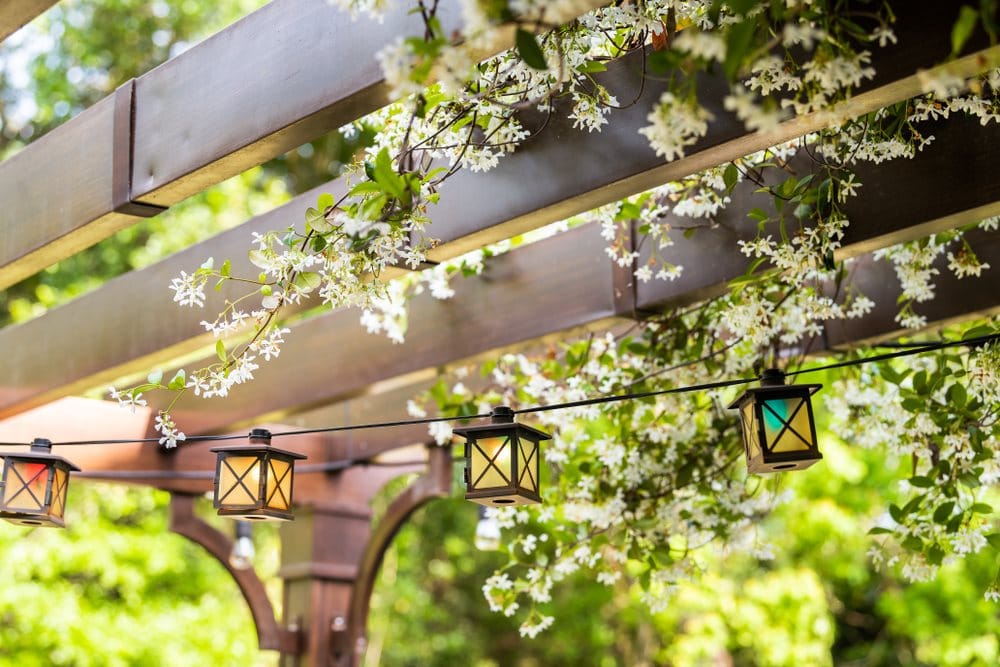
To fully enjoy your pergola, consider enhancing it with furniture, decor, and practical features.
16: Furniture & Decor: To furnish your pergola, choose weather-resistant furniture that ensures comfort and durability. Add outdoor cushions, rugs, and decorative elements like lanterns or potted plants to create a cozy and inviting space. Consider incorporating a dining table, lounge chairs, or a hammock to suit your intended use.
17: Creating Functional Outdoor Spaces: Design your pergola to accommodate various activities. Add a built-in seating area or a fire pit for social gatherings. Install outdoor lighting to extend usability into the evening.
18: Enhancing Comfort and Usability: To increase shade and comfort, add features such as shade cloths, retractable canopies, or climbing plants. Install heaters or outdoor curtains to make the space usable year-round. Customize your pergola with elements that enhance your outdoor experience, such as a built-in bar or a small outdoor kitchen/grilling station.
Should You be Building a Pergola? Ask the Experts at StruXure NorCal Why You Want a Pergola Professional
While building your own pergola can be rewarding, it’s crucial to consider the complexities and safety concerns involved. Professional expertise is invaluable for a pergola that is not only beautiful but also structurally sound and durable.
At StruXure NorCal, we specialize in designing and installing custom pergolas that meet the highest standards of quality and safety. Contact us today to get a free design consultation and start planning your dream pergola. Trust our experts to deliver a stunning, secure home addition tailored to your unique needs and style.
Building a Pergola FAQs
How do I ensure my pergola can withstand high winds?
To ensure your pergola can withstand high winds, use sturdy materials like metal or reinforced wood, anchor the posts securely with concrete, and use structural screws for added stability. Consulting with a professional can also help you design a wind-resistant structure.
Can I install a pergola myself, or should I hire a professional?
While installing a pergola yourself can be rewarding, hiring a professional ensures the structure is safe, stable, and meets all local building codes. Professionals also bring experience and expertise that can enhance your pergola’s overall quality and durability.
How can I maximize the benefits of my pergola?
Maximize the benefits of your pergola by adding comfortable, weather-resistant furniture and decor like outdoor cushions and rugs. Enhance functionality with retractable canopies, lighting, and heaters, ensuring your pergola is a versatile space that can be enjoyed year-round.

